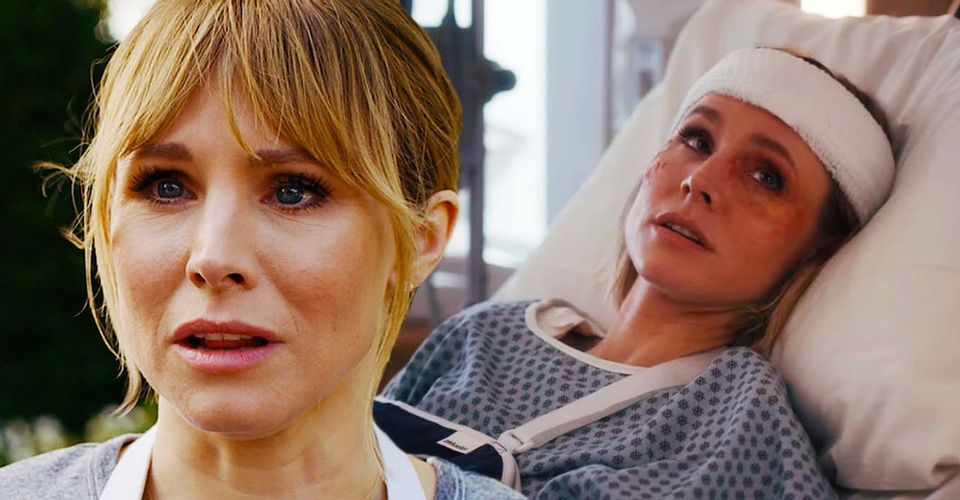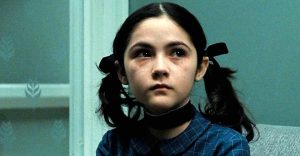Woman In The House’s Ending Was A Dream – Theory Explained

Warning! SPOILERS for The Woman in the House‘s season 1 finale.
Looking at the many hallucinatory moments in Netflix’s The Woman in the House Across the Street From the Girl in the Window, the finale may be one of them, leading some viewers to theorize the season 1 was just a dream. Kristen Bell’s Anna Whitaker is a depressed divorcee who tragically lost her daughter Elizabeth (Appy Pratt) three years prior when her husband Douglas (Michael Ealy), a forensic psychiatrist specializing in serial killers, had a moment of negligence on “Take Your Daughter To Work Day.” Anna spends her day drinking bottles of wine with her class four psychotropics while sitting in front of the window facing her new neighbors, the recently-widowed Neil Coleman (Tom Riley) and his nine-year-old daughter Emma (Samsara Yett). One day, Anna sees Neil’s girlfriend Lisa (Shelley Hennig) with blood gushing out of her neck, desperately getting Anna’s attention before collapsing to her death. Anna then pursues Lisa’s killer, despite everyone’s insistence that it was a hallucination.
Woman in the House spoofs many psychological thrillers, as the show’s absurdly long name suggests. The dialogue comically repeats itself, with Anna saying multiple times in the finale that she feels like she was “hit by a Mack truck driven by a nine-year-old” after her attack. There are also little humorous Easter eggs and callbacks, like Buell’s (Cameron Britton) taxidermic raccoon lamp alluding to his episode one remarks about a broken porch light, and the attic’s stack of books titled You Too Can Be An Artist, You Also Can Be An Artist, and Anyone Can Be An Artist. The show purposefully has inconsistencies and plot holes because of its parodic nature, which become all the more justified when the show proves Anna to be an unreliable narrator. Needless to say, the show opens itself to multiple analyses.
According to one fan theory via Reddit, Anna may have imagined most of the finale. In fact, while Woman in the House’s twist killer is revealed to be Emma, it might actually be Anna. Even though Woman in the House isn’t meant to be taken too seriously, one can still deduce clues to validate this theory.
Woman In The House’s Ending Could’ve Been A Dream

The finale is unusually too good to be true, even when considering that this is clearly part of the show’s satire. Detective Lane (Christina Anthony) unquestioningly accepts her and Douglas’ self-defense testimony for killing a child, and she gives Anna her long-waited justification. Anna’s judgmental neighbor Carol (Brenda Koo) even apologizes to her in the hospital. Anna learns that Claire (Nicole Pulliam), the woman in Douglas’ suggestively romantic Instagram post, is actually his coworker. Anna’s ombrophobia in Woman in the House is completely cured, so much so that she stands in the rain without even flinching. Finally, Douglas and Anna reunite and have another baby girl. It’s not necessarily the events themselves that make the ending implausibly happy, but all the events combined. Every good thing that can happen for Anna happens in the best way possible – all at once.
A couple things could prompt Anna’s finale delusions. The show explains that Anna’s hallucinations come from combining alcohol with her heavy medication. However, Woman in the House’s penultimate episode 7 explicitly notes that Anna is out of wine, and she never takes any medication between her arrest and the finale’s events. Anna’s ombrophobia causes her to pass out in panic, except in the finale when she fights through it. Potentially, she doesn’t actually overcome her fear and is dreaming from that point forward. However, if she is lucid, Emma strikes her unconscious with Woman in the House’s recurring chicken casserole dish during their fight. Anna’s unreliable narration and hallucinations are also due to her depression. For example, she imagines Elizabeth playing in her room in Woman in the House’s episode 1 before remembering that she died.
Why Anna Might’ve Been Woman In The House’s Real Killer

Many reasons make Anna dislike Lisa, a.k.a. Chastity Linkous, with the biggest reason being that she prevents Anna from being part of the Coleman family and recreating a life before Elizabeth’s death. Despite stabbing a painting she made of Lisa out of anger, the original memory flashes prompting her to recall this are dark, not light, and she’s looking down instead of in front of her, where a painting would be placed. While there are plausible explanations for Emma being the killer, as explained in Woman in the House’s ending, certain elements allow for the killer’s identity to still be up for debate. As satirical as the show is, Emma’s reasons for killing her victims are loftier than Anna’s reasons for, at least, killing Lisa.
What’s more interesting is Emma’s decision to take such great lengths in framing Anna. Even though Anna broke into her home and called the police on the Coleman residence, with both instances troubling Emma, Anna never expressed any suspicion towards Emma being the killer. Emma kills her victims due to them slighting her in some way, be it from her mother being pregnant with a sibling, Lisa rejecting her chocolate bars rudely, or Neil having a bad ventriloquist act. Anna, however, expresses direct favoritism to Emma by buying lots of chocolate, offering her home as a safe space, and explicitly saying she likes her. Considering how forgetful Woman in the House makes Anna, she can still be the possible killer instead of Emma.
The Importance Of Woman In The House’s Airplane Scene

Anna boards a plane to New York to visit her friend Sloane (Mary Holland), whereupon she meets a mysterious passenger in seat A-2 played by Glenn Close. She sees this passenger after taking Xanax with vodka, thus reinforcing the plausibility that she’s hallucinating. Glenn Close’s cameo continues to serve the show’s satire because of Close’s involvement with the psychological thrillers Fatal Attraction and Jagged Edge, but her role could be more significant. Anna’s hallucinations seem to present elements and people from reality, so Close could be someone of significance instead of a person from her imagination. If Anna dreamt most of the finale, Close could represent someone trying to get across to her. She’s possibly a homicide detective tracking Anna on “business,” as Close’s character ominously says. Close’s character may be explained in Woman in the House’s season 2, if the show gets renewed for one.
Whether Close’s character has any actual significance to the show or not, Anna ends the episode by picking up a golden compact mirror sitting on the empty A-2 seat. She opens the mirror and says a line repeated throughout the season: “Bingo.” Unless the mirror exposes more than Anna’s own reflection, this act could symbolically mean that the killer Anna was looking for all along was herself. It’s difficult to determine how much of the finale, much less the airplane scene, is a delusion, but the episode makes it clear that Anna is imagining at least a portion of it.
Anna’s Delusions Make The Entire Show A Parody

Part of what makes this show a clear parody of psychological thrillers are Anna’s delusions. It would also be entirely in line with the show for the finale to be exaggerated as one massive hallucination. Anna’s delusions come everywhere, like Elizabeth’s changing epitaphs in Woman in the House. A psychological thriller trope is a main character that no one fully believes, and Woman in the House maximizes this to comedic effect. The show recognizes that the humor isn’t in the serious subjects of grief, drug abuse, and mental health, so it instead satirizes how such subjects are treated in the genre through over-exaggeration and absurdity. For example, taking the epitaphs, a morose and potentially triggering child grave becomes morbidly funny with text like “There’s no ‘I’ in Heaven.” It’s not the child’s grave that’s funny, but the show’s environment.
In addition to her delusions leading her to potentially kill Lisa, and maybe even Neil and Emma, Anna’s mental health addresses deeper themes regarding grief and tragedy. Adding to the already unbearable tragedy of losing a child, Elizabeth died horrifically in Woman in the House that Anna deals with alone. The Woman in the House Across the Street From the Girl in the Window is obviously a parody, yet it still manages to convey bigger mysteries and more serious issues.
About The Author


















